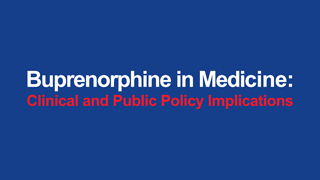A pilot survey of attitudes and knowledge about opioid substitution therapy for HIV-infected prisoners
DOI:
https://doi.org/10.5055/jom.2008.0012Keywords:
HIV, AIDS, incarceration, Criminal Justice System, prison, opioids, buprenorphine, methadone, prisonersAbstract
A majority of inmates in the state of Connecticut Department of Corrections use opioids or are opioid dependent before incarceration. None of the state’s prisons offer opioid substitution therapy other than for detoxification or maintenance therapy for women during pregnancy. On release to the community, most prisoners relapse to drug use and this has been associated with higher recidivism rates, and less adherence to antiretroviral medications for HIV-infected persons. Nationally and internationally, methadone (METH) and buprenorphine (BUP) have been found to decrease relapse to drug use, decrease recidivism rates, improve adherence to antiretroviral medications, decrease HIV-risk taking behaviors, and improve mortality. However, the general knowledge about opioid substitution therapy among correctional facility staff has been reported as substandard. This pilot study compiled results of answers to anonymous surveys from 27 individuals who work directly with inmates in a patient-care capacity for the Connecticut Department of Corrections (CT DOC) and CT DOC case-management referral program (Project TLC) in the year 2006. The surveys included questions regarding current attitudes and knowledge about opioid substitution therapy for prisoners. A minority of respondents refer released prisoners with a history of opioid dependency to METH or BUP treatment. The majority of correctional workers and case-management referral workers did not have knowledge about BUP or METH’s ability to improve health and decrease HIV risk taking behaviors. This study found that more education of individuals treating and caring for HIV-infected opioid dependent prisoners is needed.References
Beck A, Karber J, Harrison P: Prison and jail inmates at midyear 2001. Bureau of Justice Statistics Bulletin. 2002; NCJ 191702. Available at http://www.ojp.usdoj.gov/bjs/pub/pdf/pjim01.pdf.
Hammett TM, Harmon MP, Rhodes W: The burden of infectious disease among inmates of and releasees from US correctional facilities, 1997. Am J Public Health. 2002; 92: 1789-1794.
Springer SA, Pesanti E, Hodges J, et al.: Effectiveness of antiretroviral therapy among HIV-infected prisoners: Reincarceration and the lack of sustained benefit after release to the community. Clin Infect Dis. 15 2004; 38: 1754-1760.
Rich JD, Boutwell AE, Shield DC, et al.: Attitudes and practices regarding the use of methadone in US state and federal prisons. J Urban Health. 2005; 82: 411-419.
Andrews S, Sorensen J, Guydish J, et al.: Knowledge and attitudes about methadone maintenance among STaff working in a therapeutic community. J Mainten Addict. 2005; 3: 47-59.
Altice F, Khoshnood K: Transitional Case Management as a strategy for Linking HIV-Infected Prisoners to Community Health and Social Services (Project TLC). Connecticut Department of Public Health Monograph, 1997.
Dolan K, Hall W, Wodak A: Methadone maintenance reduces injecting in prison. BMJ. 1996; 312(7039):1162.
Dolan KA, Shearer J, White B, Zhou J, Kaldor J, Wodak AD. Four-year follow-up of imprisoned male heroin users and methadone treatment: Mortality, re-incarceration and hepatitis C infection. Addiction. 2005; 100: 820-828.
Smith-Rohrberg D, Bruce RD, Altice FL: Review of correctionsbased therapy for opiate-depenndent patients: Implications for buprenorphine treatment among correctional populations. J Drug Issues. 2004; 34: 451-480.
WHO: World Health Organization Guidelines on HIV Infection and AIDS in Prison. Strasbourg: Council of Europe, Ministers of the State Members, 1993.
World Health Organization UNOODaC, and the Joint United Nations Programme on HIV/AIDS: Joint Position Paper on Substitution Maintenance Therapy in the Management of Opioid Dependence and HIV/AIDS Prevention. Geneva: WHO, 2004.
Levasseur L, Marzo J, Ross N, et al: Frequency of re-incarcerations in the same detention center: Role of stubstituion therapy. A preliminary retrospective analysis. Ann Med Intern. 2002; 153(3 suppl): 1S14-1S19.
Durand E: [Changes in high-dose buprenorphine maintenance therapy at the Fleury-Merogis (France) prison since 1996]. Ann Med Interne (Paris). 2001; 152(suppl 7): 9-14.
Springer SA, Altice FL: Managing HIV/AIDS in correctional settings. Curr HIV/AIDS Rep. 2005; 2: 165-170.
Mumola C: Substance abuse and treatment, state and federal prisoners, 1997. Bureau of Justice Statistics Report. Jan 1999; NCJ 172871. Available at http://www.ojp.usdoj.gov/bjs/pub/pdf/ satsfp97.pdf.
Fallon B: The Key Extended Entry Program (KEEP): From the community side of the bridge. Mt Sinai J Med. 2001; 68: 21-27.
Sibbald B: Methadone maintenance expands inside federal prisons. CMAJ. 2002; 167: 1154.
Tomasino V, Swanson AJ, Nolan J, et al.: The Key Extended Entry Program (KEEP): A methadone treatment program for opiate-dependent inmates. Mt Sinai J Med. 2001; 68: 14-20.
Byrne A, Dolan K: Methadone treatment is widely accepted in prisons in New South Wales. BMJ. 1998; 316: 1744-1745.
Kinlock TW, Battjes RJ, Schwartz RP: A novel opioid maintenance program for prisoners: Preliminary findings. J Subst Abuse Treat. 2002; 22: 141-147.
Zaric GS, Barnett PG, Brandeau ML: HIV transmission and the cost-effectiveness of methadone maintenance. Am J Public Health. 2000; 90: 1100-1111.
Yoast R, Williams MA, Deitchman SD, et al.: Report of the Council on Scientific Affairs: Methadone maintenance and needleexchange programs to reduce the medical and public health consequences of drug abuse. J Addict Dis. 2001; 20: 15-40.
Stark K, Muller R, Bienzle U, et al.: Methadone maintenance treatment and HIV risk-taking behaviour among injecting drug users in Berlin. J Epidemiol Commun Health. 1996; 50: 534-537.
Mattick R, Ali R, White J: Buprenorphine versus methadone maintenance therapy: A randomized double-blind trial with 405 opioid-dependent patients. Addiction. 2002; 98: 441-452.
Metzger DS, Woody GE, McLellan AT, et al.: Human immunodeficiency virus seroconversion among intravenous drug users in- and out-of-treatment: An 18-month prospective follow-up. J Acquir Immune Defic Syndr. 1993; 6: 1049-1056.
Palepu A, Tyndall MW, Joy R, et al.: Antiretroviral adherence and HIV treatment outcomes among HIV/HCV co-infected injection drug users: The role of methadone maintenance therapy. Drug Alcohol Depend. 2006; 84: 188-194.
Lucas GM, Mullen BA, Weidle PJ, et al.: Directly administered antiretroviral therapy in methadone clinics is associated with improved HIV treatment outcomes, compared with outcomes among concurrent comparison groups. Clin Infect Dis. 2006; 42: 1628-1635.
Bruce RD, Altice FL, Gourevitch MN, et al.: Pharmacokinetic drug interactions between opioid agonist therapy and antiretroviral medications: Implications and management for clinical practice. J Acquir Immune Defic Syndr. 2006; 41: 563-572.
Choopanya K, Des Jarlais DC, Vanichseni S, et al.: HIV risk reduction in a cohort of injecting drug users in Bangkok, Thailand. J Acquir Immune Defic Syndr. 2003; 33: 88-95.
Avants SK, Margolin A, Usubiaga MH, et al.: Targeting HIVrelated outcomes with intravenous drug users maintained on methadone: A randomized clinical trial of a harm reduction group therapy. J Subst Abuse Treat. 2004; 26: 67-78.
Published
How to Cite
Issue
Section
License
Copyright 2005-2024, Weston Medical Publishing, LLC
All Rights Reserved












